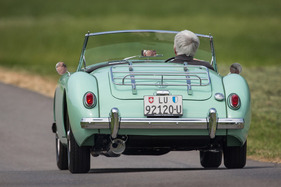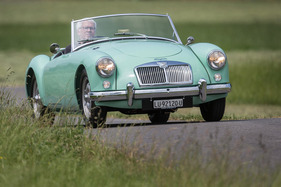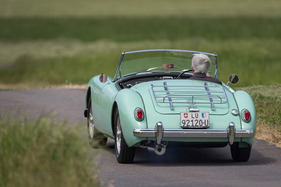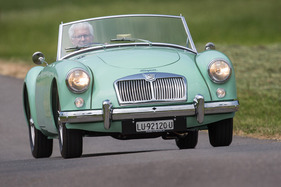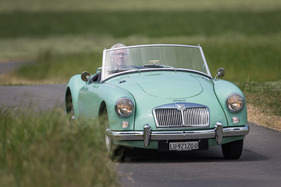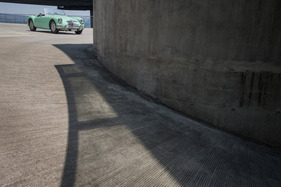MGA Twin Cam - bitchy thoroughbred?
Summary
Four-cylinder engines with two overhead camshafts could be counted on one hand in the 1950s; apart from Alfa Romeo, this was only available in large-scale production at MG. The MGA Twin Cam offered 50% more power than its simpler production brother, but cost less than many equally fast competitors. Nevertheless, it was not a success. This driving report is about an MGA Twin Cam from 1959 and shows the car in current and historical images. A sound sample is also included.
This article contains the following chapters
- Two attempts, one engine
- Presentation as a special
- Enthusiasm in the press
- Sophisticated technology
- The great death of the engine
- Not a great success
- Technology under control today
- At the wheel of the rarity
Estimated reading time: 9min
Preview (beginning of the article)
Over 100,000 MGAs were built between 1955 and 1962. With its elegant lines and robust technology, the MG sports car, which was sold open and closed, was particularly popular in the USA. In 1958, however, a very special version with a twin-camshaft engine appeared, which only made it to just over 2000 units in three years and is now considered the most sought-after MGA version - despite its bad reputation, which still lingers today. Engines with two camshafts per cylinder bank are not an MG invention. As early as 1912, Peugeot had a racing engine with two overhead camshafts, and racing engines used this design after the Second World War to achieve higher engine speeds. At Alfa Romeo, a four-cylinder engine with two overhead camshafts was used in the Giulietta from 1954, and other manufacturers also began to experiment with this design approach.
Continue reading this article for free?
Photos of this article

















































































































